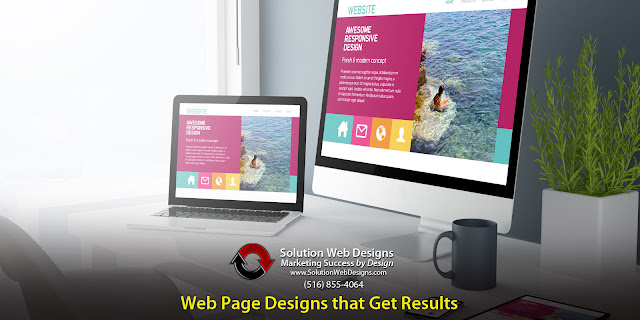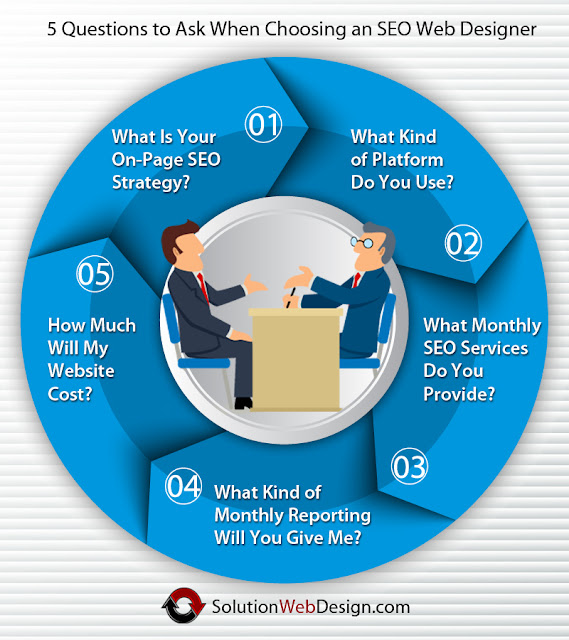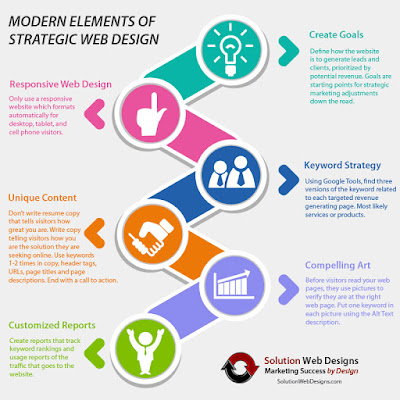Web Page Designs that Get Results
Web Page Designs that Get Results
Knowing web design guidelines for better usability is
something that will encourage better conversions when properly executed.
Websites that fail to be user-friendly don't get very good results. Simply put,
a website that isn't easily navigable and doesn't satisfy a person's reasons
for being there is one that will push visitors to a competitor. Ensuring your
website is efficient, easy-to-use and full of helpful content. These are excellent
guidelines from a leading web design agency, to follow so your website generates and converts new leads.
Guidelines for Better Usability
The following is a list of step-by-step guidelines that will help you build a website that converts visitors into leads and customers.
1. Research the Audience
To know what kind of content to put on the website, you must research the audience. Giving the audience what they don't want will prevent the website from performing well. It doesn't hurt to recruit some users during the design process to get their feedback. Let them make suggestions because they are a small part of a broad audience that feels the same way they do about the content they consume. Meeting the expectations of this small group of users will better help you support the needs of the target audience.
2. Think About User Experience
Users want good experiences when making buying decisions. One area that users tend to become frustrated with is the presence of unsolicited windows. Think pop-ups in this case. When a person is looking at a website, having a pop-up appear at the worst moment can make them leave.
It's also imperative to make the website look professional with consistent processes throughout. A user wants to understand a website quickly when they arrive so that they can go where they want to go when they want to go there. This helps build trust in what you build, which is important because a user will leave a website that they feel lacks credibility. The print should be easy-to-read, frequently asked questions should be visible and terminology that is easy for your needs to be put into terns that's easy for them.
3. Use Assistive Technologies
Section 504 of the Rehabilitation Act says that websites must be usable by all people, including people with disabilities. Animations, maps, text for images, and other forms of media will help you achieve this. Screen flicker shouldn't be present because this could trigger seizures in people with epilepsy.
4. Include Links on Your Home Page
The home page is the first page visitors see, so it has to be attractive. It's also the doorway to other pages on your website, which means the most important links must be included. Doing so will make a person stay rather than immediately leave. When a visitor leaves quickly, it hurts your website's ranking because the bounce rate increases and the time a visitor spends on the site is low. That signals to search engines that your website isn't very interesting, even if it is.
When a home page takes a long time to load, or there is a lot of text, a user can become overwhelmed and leave. That's why it can be important to not put too many pictures on the homepage. Get to the point and give users doors to continue walking through your website.
5. User-Friendly Page Layout
The way pages should be laid out has a set of guidelines all on its own. First, you should include what is necessary. This means not making your pages cluttered with images or repetitive information. A page that has less clutter is more easily navigated, especially on mobile devices. The most important elements you want your visitors to know should be at the top of the page in the center. Users should never have to feel that they need to move back and forth between pages to compare material. Highly important information should go at the top with the least important information at the bottom.
6. Intuitive Navigation
Information should be easy to access. In addition to an easy-to-understand menu on the website, it is good to use links and buttons so users can be taken to essential places on your website. Make sure the back button on your site works well because it is one of the most frequently used buttons. You want them to stay on the site, not get lost. It's also good to make sure the menu item the user is on is highlighted a different color, so they know where they are.
7. Eliminate Horizontal Scrolling
A person should never have to scroll horizontally on a website if their screen is magnified to 100%. Anything above 100% can result in horizontal scrolling, but that is on their end. If horizontal scrolling is happening on your end, the screen width is going to have to be adjusted. A screen that is too wide causes the information not to be seen.
Also, consider paging that uses links to get to a section faster instead of making the user scroll. The more pages a user visits in one session, the better it looks to search engines.
8. Headings, Labels, and Titles
All headings, labels, and titles should be descriptive, so the site is easier for people to scan. Users tend to scan a text before actually reading the text on a page. If they see titles, headings, and labels that are appealing, they are more likely to stick around to see what is said on the page.
You can also use lists to make pages easy to make sense of. Large blocks of text under a heading is a turn-off to someone looking for fast information.
9. Links, Multimedia, and Web Content
When it comes to links, try not to use "click here" for everything. There is no harm in being creative. In fact, you can hyperlink words in your content that leads to other areas of your website. Make sure the type, size, and location of your text are taken into consideration so that everything that is important and relevant is seen. Integrate graphics, videos, and images to make the site more interesting, but make sure you don't clutter up the page. Give users the information that they need to avoid boredom, yet don't write too little content that doesn't answer the questions they are asking.
10. The Right Website Design Gets Results
All in all, following these guidelines, will help you build a better website design, so you get the results you need to be more profitable. It can be tempting to follow your imagination on a design, but it is essential to ask yourself if it is too much for a user, not enough or doesn't provide a clear roadmap to relevant content that can convert them from a visitor to a customer.
About the Author
Craig Corbel is Vice President of Marketing at Solution Web Designs, a leading Web Design Agency serving small and mid-sized businesses. Learn more by visiting his website.




Comments
Post a Comment